Peugeot 3008 vs Peugeot 308 – Differences & prices compared
Compare performance, boot space, consumption and price in one view.
Find out now: which car is the better choice for you – Peugeot 3008 or Peugeot 308?
The Peugeot 3008 (SUV) comes with a Plugin Hybrid, Electric or Petrol MHEV engine and Automatic transmission. In comparison, the Peugeot 308 (Hatchback) features a Diesel, Electric or Petrol MHEV engine with Automatic transmission.
When it comes to boot capacity, the Peugeot 3008 offers 520 L, while the Peugeot 308 provides 412 L – depending on how much space you need. If you’re looking for more power, decide whether the 325 HP of the Peugeot 3008 or the 156 HP of the Peugeot 308 suits your needs better.
In terms of consumption, the values are 16.80 kWh0.90 L per 100 km for the Peugeot 3008, and 15.20 kWh5 L for the Peugeot 308.
Price-wise, the Peugeot 3008 starts at 34400 £, while the Peugeot 308 is available from 28600 £. Compare all the details and find out which model fits your lifestyle best!
In a thrilling face-off between the Peugeot 3008 and the Peugeot 308, each model showcases distinct strengths tailored to different driving preferences. The 3008, with its bold SUV styling and spacious interior, appeals to those seeking versatility and practicality, while the 308 captivates with its sporty hatchback design and agile handling, perfect for urban driving. Ultimately, the choice between these two exquisite Peugeots hinges on whether buyers prioritize space and ruggedness or prefer a dynamic driving experience with a compact footprint.
Peugeot 3008
The Peugeot 3008 is a compact SUV that seamlessly combines sleek design with modern functionality. Its interior offers a sophisticated and comfortable driving experience, characterised by high-quality materials and innovative technology features. With its dynamic performance and stylish aesthetics, the 3008 stands out in the competitive world of family SUVs.
details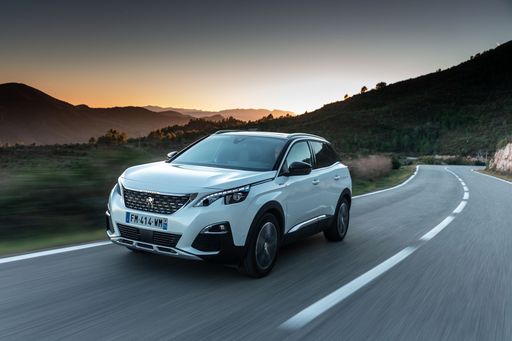 @ media.stellantis.com
@ media.stellantis.com
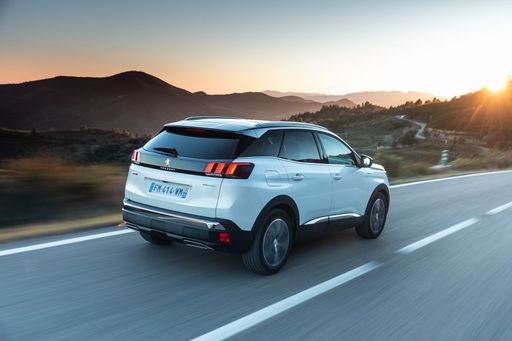 @ media.stellantis.com
@ media.stellantis.com
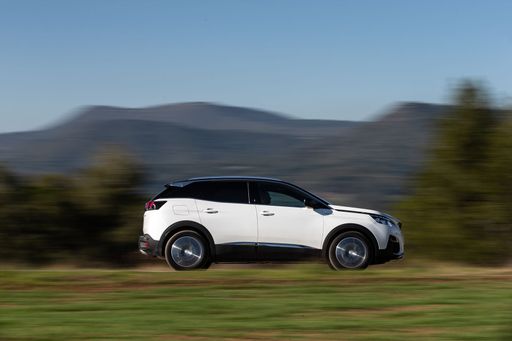 @ media.stellantis.com
@ media.stellantis.com
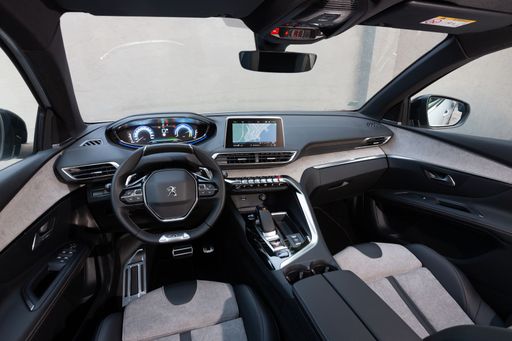 @ media.stellantis.com
@ media.stellantis.com
Peugeot 308
The Peugeot 308 presents a refined blend of style and sophistication, making it a compelling option for anyone in search of a dynamic yet practical vehicle. Its sleek design is complemented by a thoughtfully crafted interior that ensures both driver and passengers travel in comfort and elegance. Moreover, the 308 offers a responsive driving experience, combining agility with a sense of security on the road.
details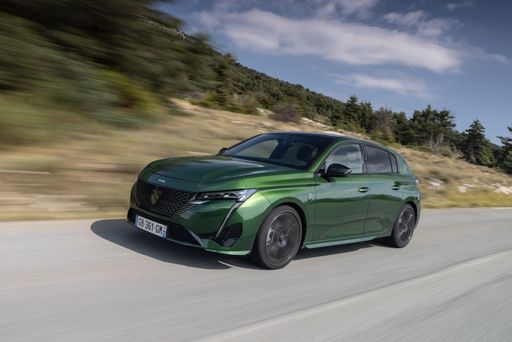 @ media.stellantis.com
@ media.stellantis.com
 @ media.stellantis.com
@ media.stellantis.com
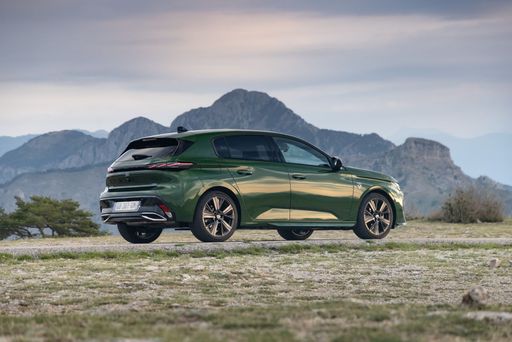 @ media.stellantis.com
@ media.stellantis.com
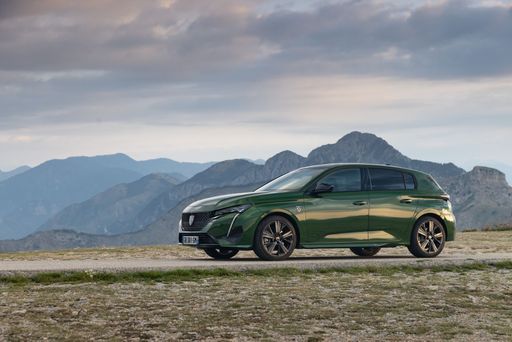 @ media.stellantis.com
@ media.stellantis.com
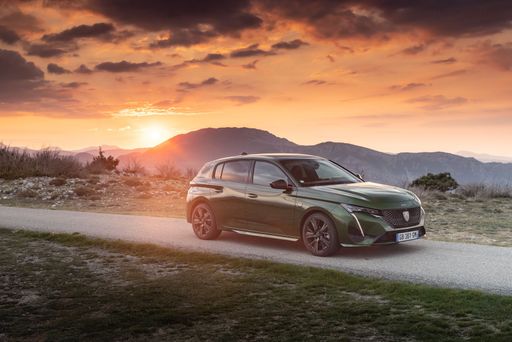 @ media.stellantis.com
@ media.stellantis.com
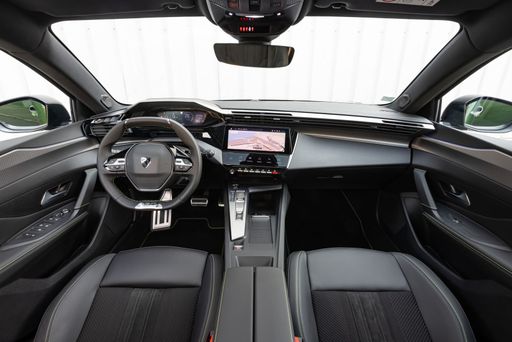 @ media.stellantis.com
@ media.stellantis.com
Peugeot 3008 vs Peugeot 308: A Comparative Analysis
When it comes to the ever-evolving automotive market, few brands have made a mark like Peugeot. Offering a diverse range of models, the brand caters to varied preferences. In this article, we delve deeply into a comparison between the Peugeot 3008, an SUV, and the Peugeot 308, a hatchback, shedding light on their technical specifications, innovations, and overall driving experience.
Body and Design: Aesthetic Appeal
The Peugeot 3008 showcases a robust and bold design typical of SUVs, measuring 4542 mm in length, 1895 mm in width, and 1641 mm in height. Its elevated stance offers a commanding view of the road, while the dynamic lines contribute to its sporty aesthetics.
Contrastingly, the Peugeot 308 embraces a more compact profile with dimensions of 4367 mm in length, 1852 mm in width, and 1441 mm in height. As a hatchback, it is designed for agility and ease of maneuverability, appealing particularly to urban drivers.
Powertrains: Engine Options and Performance
The Peugeot 3008 offers a range of engines, partnering with various fuel types including petrol MHEV, plug-in hybrid, and electric variants. With power outputs ranging from 136 to 231 HP, it presents a diverse selection depending on consumer needs. The SUV accelerates from 0 to 100 km/h in as little as 8.4 seconds depending on the engine variant, with a top speed of 220 km/h.
On the other hand, the Peugeot 308 also proffers multiple engine choices including petrol, diesel, as well as hybrid and electric options. Power outputs vary from 130 HP to an exhilarating 225 HP. Notably, the 308 can leap from 0 to 100 km/h in an impressive 7.5 seconds, while achieving a top speed of 235 km/h in its sportier trims.
Fuel Efficiency and Eco-Friendliness
In terms of fuel consumption, the Peugeot 3008 has respectable figures, with gas engine variants consuming around 5.7 L/100 km, and hybrid models boasting electric consumption rates as low as 0.9 L/100 km. Its electric variants promise substantial electric ranges of up to 698 km, making it a practical choice for eco-conscious consumers.
Meanwhile, the Peugeot 308 leads slightly in this segment, exhibiting overall fuel consumption figures around the 5 L/100 km mark for many of its petrol variants, with the electric model also achieving a notable range of up to 419 km. This mix of efficiency and performance makes the 308 appealing, especially for daily commuting.
Innovative Technology: Connectivity and Driver Assistance
Both models come equipped with a plethora of advanced technology features. The 3008 is famous for its i-Cockpit design, combining a compact steering wheel with a high-definition touch screen that provides access to a suite of multimedia and navigation features. Safety is enhanced through advanced driver assistance systems, including adaptive cruise control, lane-keeping assist, and a 360-degree camera view system.
Similarly, the Peugeot 308 boasts a modernized i-Cockpit interface that focuses on enhancing the user's ergonomic experience. It integrates an evolving range of driver assistance technologies, like automatic emergency braking and blind-spot monitoring, ensuring a safer journey. Furthermore, it emphasizes smart connectivity options, making it a tech-savvy choice for drivers.
Space and Comfort: Interior Design and Capacity
Inside the Peugeot 3008, passengers are welcomed with a spacious cabin, providing ample legroom and headroom. The cargo space is generous, offering up to 520 L, making it suitable for families and those who require extra storage capacity.
The Peugeot 308, while smaller, still offers considerable comfort with its well-appointed interior. With a trunk capacity of 412 L, it is designed to balance style and usability, making it a smart choice for urban driving while still accommodating luggage for weekend getaways.
Conclusion: Choosing Between Power and Practicality
Ultimately, the decision between the Peugeot 3008 and the Peugeot 308 comes down to personal preferences and driving needs. The 3008 stands tall as an SUV featuring versatility, space, and a commanding presence on city roads or rough terrains. Conversely, the 308 captures the essence of nimbleness, efficiency, and a sports-oriented character more suitable to urban environments.
Both models underscore Peugeot's commitment to innovation and quality, leaving consumers with strong contenders in their respective categories. Whether you prioritize space or efficiency, Peugeot ensures there’s a fitting option available.

|

|
|
|
|
Costs and Consumption |
|
|---|---|
|
Price
34400 - 51400 £
|
Price
28600 - 41700 £
|
|
Consumption L/100km
0.9 - 5.5 L
|
Consumption L/100km
5 - 5.1 L
|
|
Consumption kWh/100km
16.8 - 17.8 kWh
|
Consumption kWh/100km
15.2 - 15.6 kWh
|
|
Electric Range
85 - 698 km
|
Electric Range
419 km
|
|
Battery Capacity
0.4 - 96.9 kWh
|
Battery Capacity
51 kWh
|
|
co2
0 - 123 g/km
|
co2
0 - 133 g/km
|
|
Fuel tank capacity
55 L
|
Fuel tank capacity
52 - 53 L
|
Dimensions and Body |
|
|---|---|
|
Body Type
SUV
|
Body Type
Hatchback
|
|
Seats
5
|
Seats
5
|
|
Doors
5
|
Doors
5
|
|
Curb weight
1648 - 2337 kg
|
Curb weight
1436 - 1759 kg
|
|
Trunk capacity
470 - 520 L
|
Trunk capacity
361 - 412 L
|
|
Length
4542 mm
|
Length
4367 mm
|
|
Width
1895 mm
|
Width
1852 mm
|
|
Height
1641 mm
|
Height
1441 mm
|
|
Payload
383 - 467 kg
|
Payload
431 - 510 kg
|
Engine and Performance |
|
|---|---|
|
Engine Type
Plugin Hybrid, Electric, Petrol MHEV
|
Engine Type
Diesel, Electric, Petrol MHEV
|
|
Transmission
Automatic
|
Transmission
Automatic
|
|
Transmission Detail
Dual-Clutch Automatic, Reduction Gearbox
|
Transmission Detail
Automatic Gearbox, Dual-Clutch Automatic, Reduction Gearbox
|
|
Drive Type
Front-Wheel Drive, All-Wheel Drive
|
Drive Type
Front-Wheel Drive
|
|
Power HP
145 - 325 HP
|
Power HP
130 - 156 HP
|
|
Acceleration 0-100km/h
6 - 10.2 s
|
Acceleration 0-100km/h
9 - 10.6 s
|
|
Max Speed
170 - 220 km/h
|
Max Speed
170 - 210 km/h
|
|
Torque
230 - 511 Nm
|
Torque
230 - 300 Nm
|
|
Number of Cylinders
3 - 4
|
Number of Cylinders
3 - 4
|
|
Power kW
107 - 239 kW
|
Power kW
96 - 115 kW
|
|
Engine capacity
1199 - 1598 cm3
|
Engine capacity
1199 - 1499 cm3
|
General |
|
|---|---|
|
Model Year
2024 - 2025
|
Model Year
2023 - 2025
|
|
CO2 Efficiency Class
B, A, D
|
CO2 Efficiency Class
D, A, C
|
|
Brand
Peugeot
|
Brand
Peugeot
|
Peugeot 3008
Introduction to the Peugeot 3008
In the rapidly evolving world of SUVs, the Peugeot 3008 stands out as a prime example of innovative design and advanced technology. Offering a range of powertrains from hybrid to fully electric, the 3008 is tailored to meet the needs of eco-conscious drivers without sacrificing performance or luxury.
Powertrain Options and Performance
The Peugeot 3008 is designed to cater to a variety of driving preferences with its versatile range of powertrains. The options include petrol mild-hybrid, plug-in hybrid, and full electric variants. The power output ranges from a modest 136 PS to a robust 210 PS, providing a performance spectrum to suit both city commuters and long-distance travellers. Notably, the plug-in hybrid variant boasts an impressive electric range of up to 85 km, while the electric version can travel up to 524 km on a single charge, making it ideal for both urban and rural settings.
Driving Dynamics and Efficiency
The 3008's driving dynamics are refined and engaging, supported by its front-wheel-drive configuration and automatic transmission. Depending on the model, the vehicle can accelerate from 0 to 100 km/h in as little as 8.4 seconds, while maintaining an efficient fuel consumption rate of as low as 0.9 L/100km for the plug-in hybrid variant. For the eco-conscious drivers, the electric model offers a consumption rate of 17.7 kWh/100km, and its CO2 emissions range from 0 to 129 g/km, reflecting its commitment to reducing environmental impact.
Design and Comfort
The Peugeot 3008 boasts a modern and sophisticated design that embodies both elegance and functionality. Its expansive interior offers seating for five, complemented by a generous boot capacity of 520 litres. The vehicle's dimensions—4,542 mm in length, 1,895 mm in width, and 1,641 mm in height—ensure ample space and a commanding presence on the road. Additionally, the 3008's array of equipment lines like Allure and GT enhance the driving experience with premium features and luxurious touches.
Innovations and Technology
The Peugeot 3008 is equipped with a suite of cutting-edge technological features designed to enhance the driving experience. The intuitive infotainment system is central to the vehicle's interior, offering seamless connectivity and navigation options. Safety and driver assistance technologies are also prominent, including advanced systems for collision avoidance and parking assistance, ensuring peace of mind on every journey.
Conclusion
In summary, the Peugeot 3008 is a compelling choice for those seeking a versatile and modern SUV. With a range of efficient powertrains, dynamic performance, and luxurious design elements, it caters to a broad spectrum of drivers. Its advanced technological features and commitment to sustainability make the Peugeot 3008 a forward-thinking option in today's automotive landscape.
Peugeot 308
Unveiling the Peugeot 308: A Blend of Style and Innovation
The Peugeot 308, an exemplar of French automotive engineering, brings together sleek design, advanced technology, and efficient performance. This hatchback caters to a diverse range of drivers, from eco-conscious individuals to those seeking a spirited driving experience. Let’s delve into the technical details and innovative features that define the Peugeot 308.
Powertrain Options: From Conventional to Cutting Edge
The Peugeot 308 offers an impressive array of powertrains to suit varying preferences and needs. Whether you opt for a traditional petrol, a fuel-efficient diesel, a sophisticated plug-in hybrid, or the fully electric variant, the 308 ensures an engaging drive. Petrol and diesel engines offer power outputs ranging from 130 to 130 PS, catering to both urban commutes and highway drives. The plug-in hybrid variants, boasting up to 225 PS, promise a seamless blend of power and efficiency, with an electric-only range of up to 57 km, perfect for city driving.
Engineering and Efficiency: Striking a Balance
The engineering marvel lies in the Peugeot 308's commitment to efficiency without compromising on performance. The fuel economy stands out, with consumption figures between 1.3 L/100km for plug-in hybrids and 5.9 L/100km for petrol engines. The electric version showcases an impressive 15.6 kWh/100km, allowing an electric range of 419 km, making it a viable option for those looking to reduce their carbon footprint.
Anatomy of Design: Sleek and Functional
Peugeot’s design philosophy shines through in the 308, with a captivating combination of elegance and practicality. Its dimensions - 4367mm in length, 1852mm in width, and 1441mm in height - create a spacious yet maneuverable vehicle. The five-door hatchback accommodates up to five passengers, offering a comfortable journey while boasting a boot space of 361 to 412 litres.
Technological Innovations and Features
The 308's cabin is a testament to Peugeot's commitment to innovation. It features an intuitive digital i-Cockpit, offering a more engaging driving interface with a configurable 10-inch digital cluster and a high-definition central touchscreen. Advanced driver assistance systems ensure safety and convenience, including adaptive cruise control, lane-keeping assist, and automated emergency braking, which elevate the driving experience.
Performance and Dynamics: Designed for the Enthusiast
Performance in the Peugeot 308 is not merely a promise but a reality, with acceleration from 0-100 km/h achieved in 7.5 to 10.6 seconds depending on the model. The dynamic chassis ensures a stable and responsive driving experience, while the range of gearbox options, including a smooth automatic and a manual transmission, cater to different driving styles.
Conclusion: The Allure of the Peugeot 308
The Peugeot 308 epitomises the blend of style, efficiency, and innovation. It offers a diverse range of powertrain options, ensuring that there’s a 308 for every kind of driver. Whether you're drawn to its design, captivated by its technology, or impressed by its efficiency, the 308 stands as a testament to Peugeot's evolution in the modern automotive landscape.
Which drive types are available for the Peugeot 3008?
Available as .
The prices and data displayed are estimates based on German list prices and may vary by country. This information is not legally binding.
